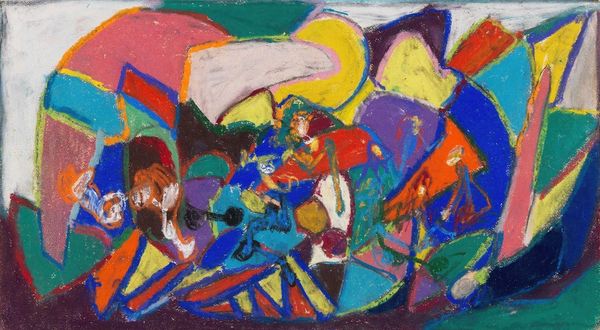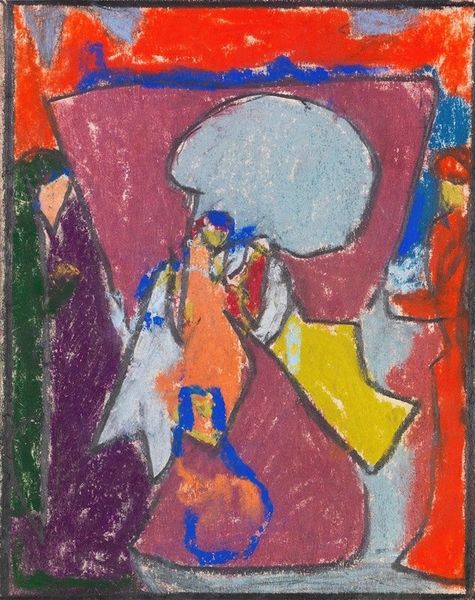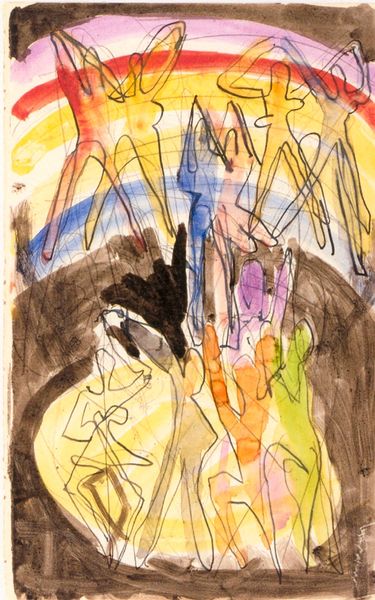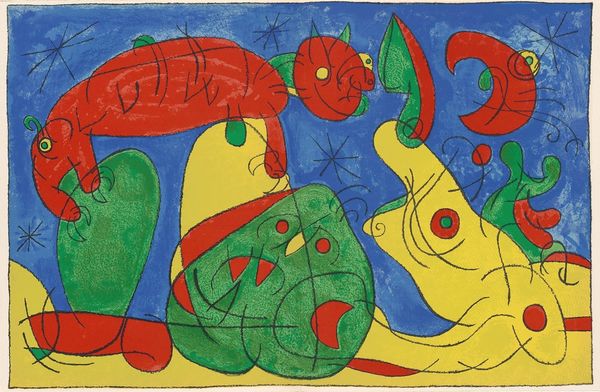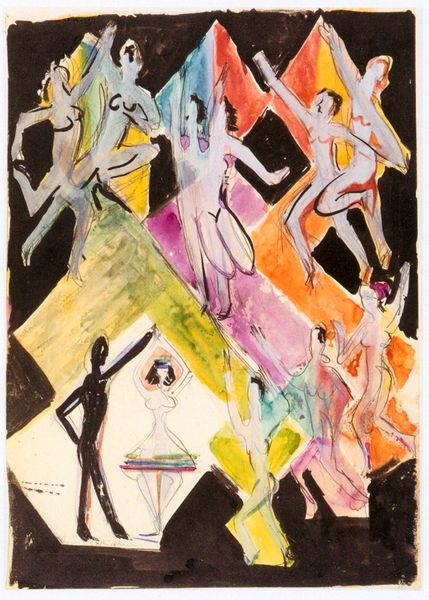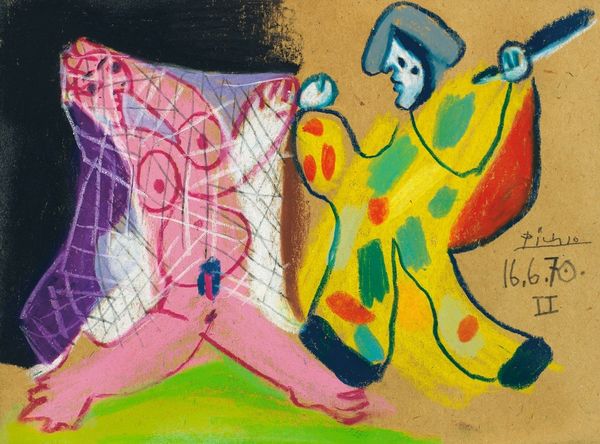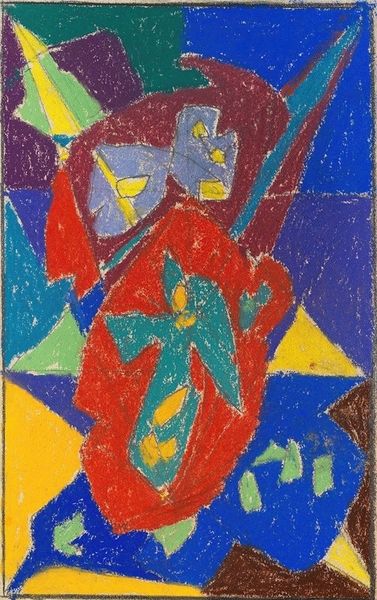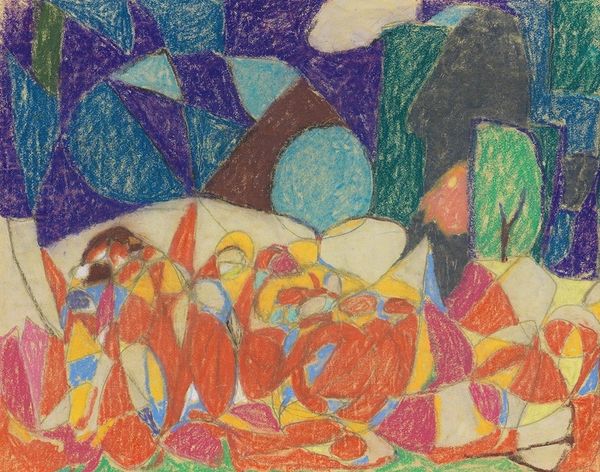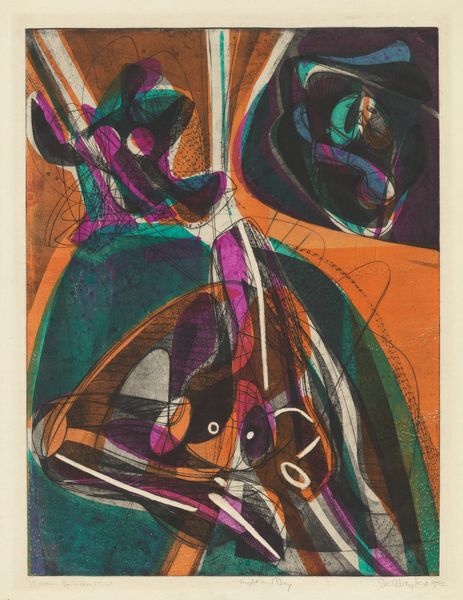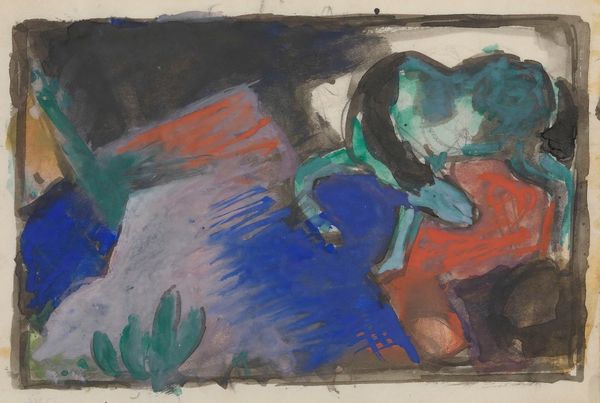
Copyright: Public Domain
This untitled work was made by Adolf Hölzel, most likely sometime between 1900 and 1934, with pastel on paper. As an artist, Hölzel was associated with the avant-garde movements in Germany, and he was influential as a teacher, promoting abstraction and non-representational forms of art. This work embodies those principles with its emphasis on color and shape over realistic representation. It also suggests the influence of Cubism, an art movement that broke down objects into geometric forms. Made in Germany, in the early 20th century, this artwork reflects a time of great social and political upheaval, as well as experimentation in the arts. It offers a challenge to traditional art academies by embracing new ways of seeing the world. To further understand the work, we can research the history of abstraction and its relationship to the social and cultural changes of the time. In doing so, we recognize that it represents more than just personal expression.
Comments
stadelmuseum about 2 years ago
⋮
A large circle dominates the composition. It is a geometric form that turns up frequently in Hölzel’s pastels as well as his glass window designs. Overlapped and penetrated by other geometric shapes, it surrounds a figural group—possibly a depiction of the Holy Family on the Flight into Egypt—in an almost protective manner. Hölzel was fond of the luminosity and velvety, powdery texture of pastel chalks, which played a major role in his oeuvre from 1920 onwards.
Join the conversation
Join millions of artists and users on Artera today and experience the ultimate creative platform.

